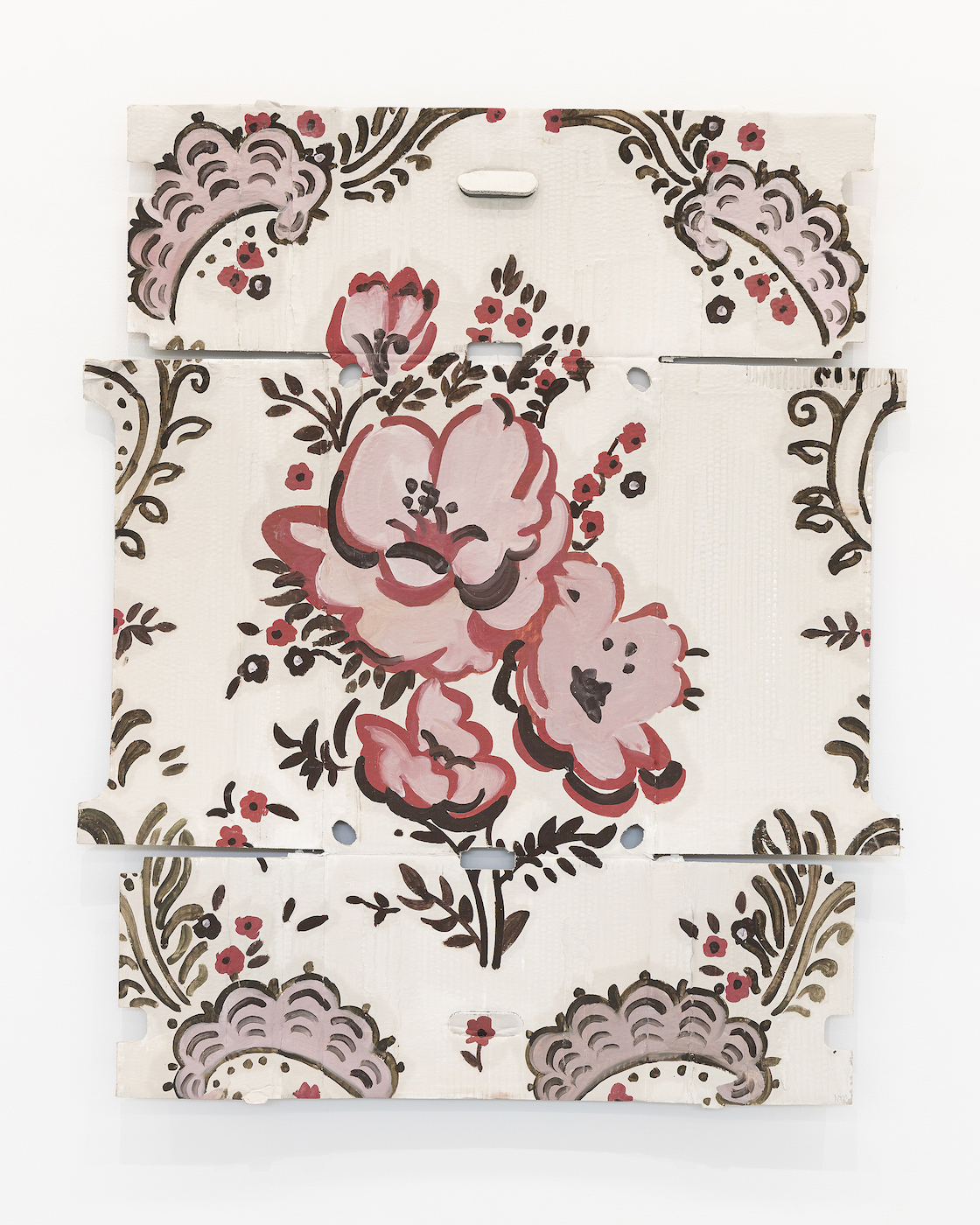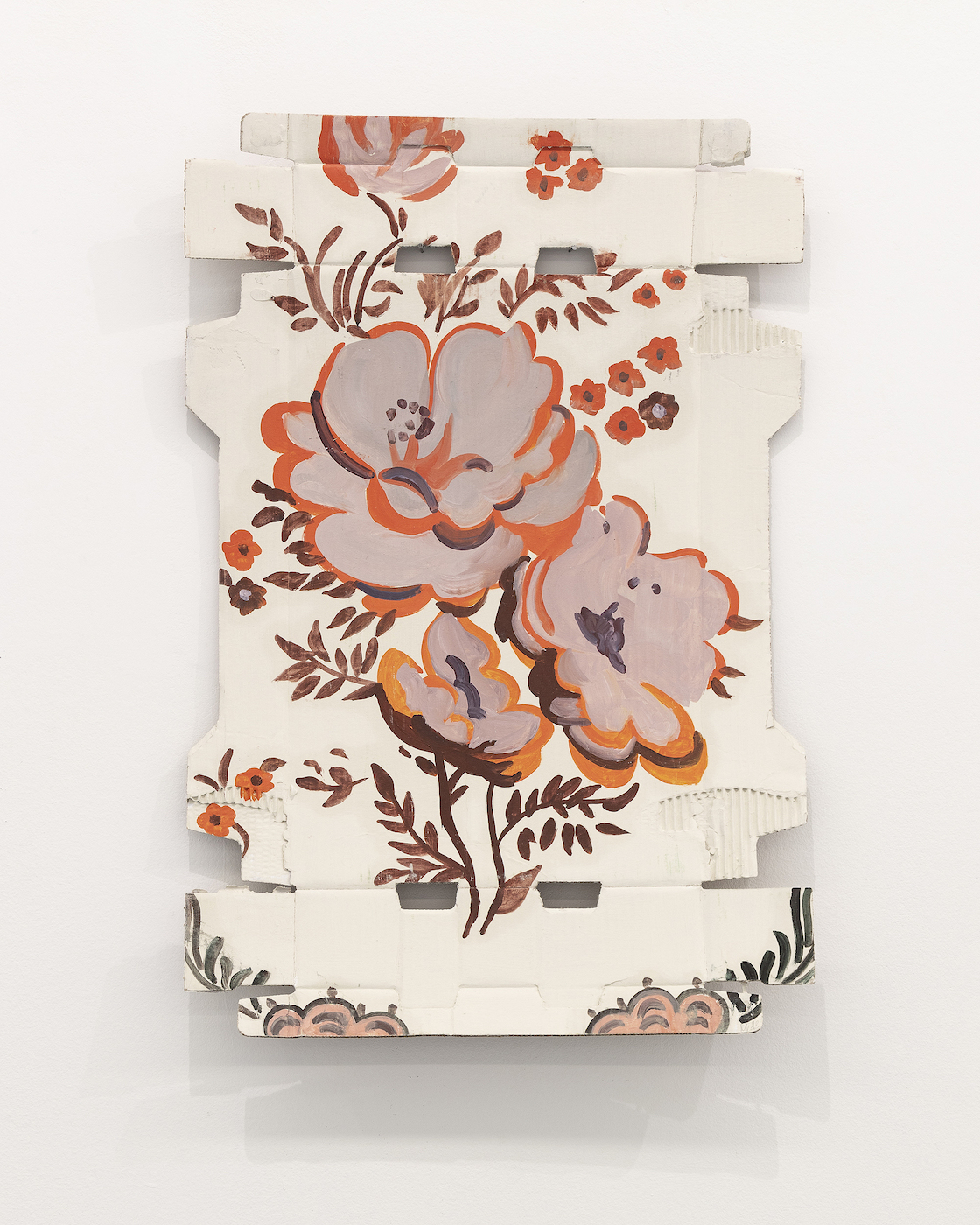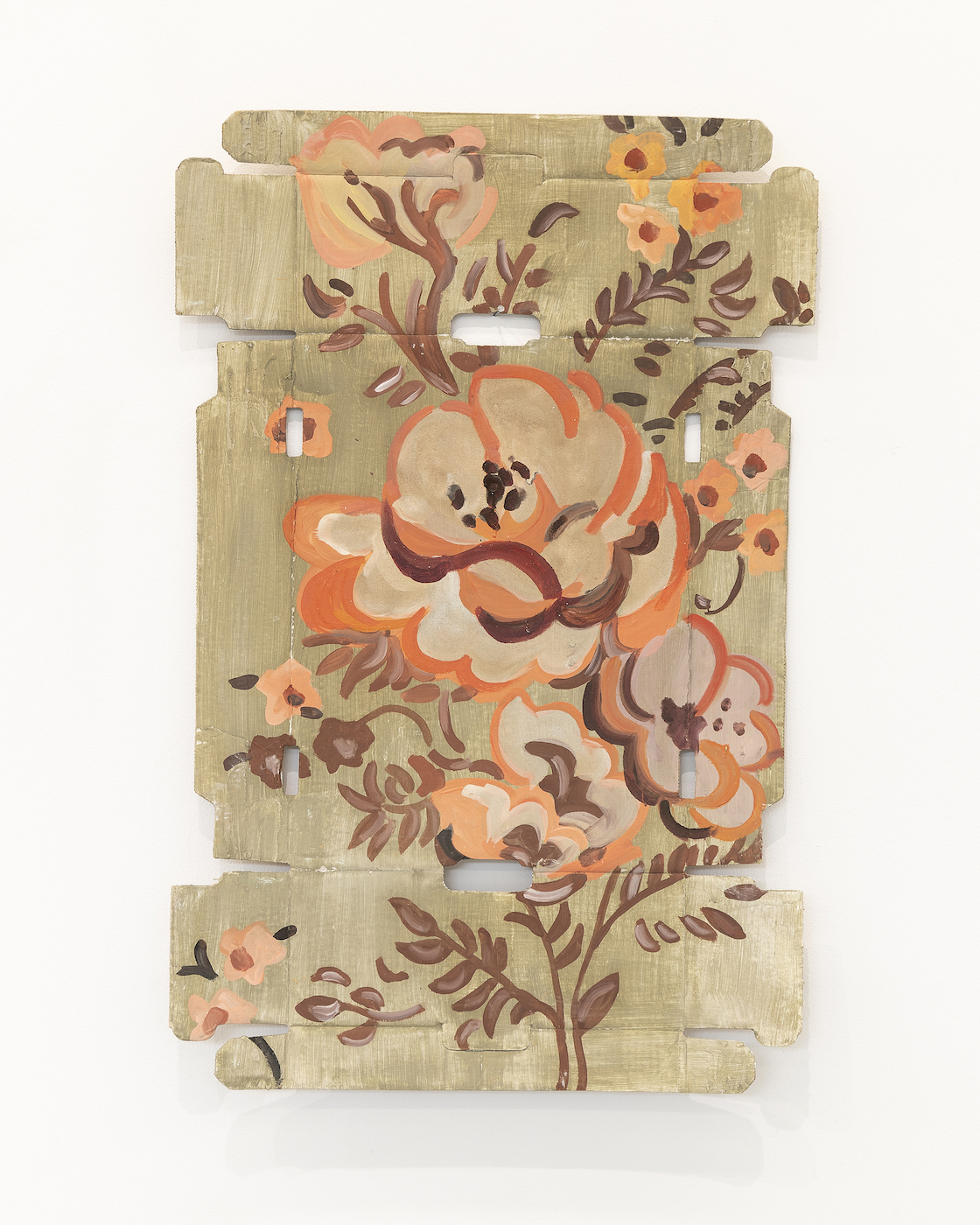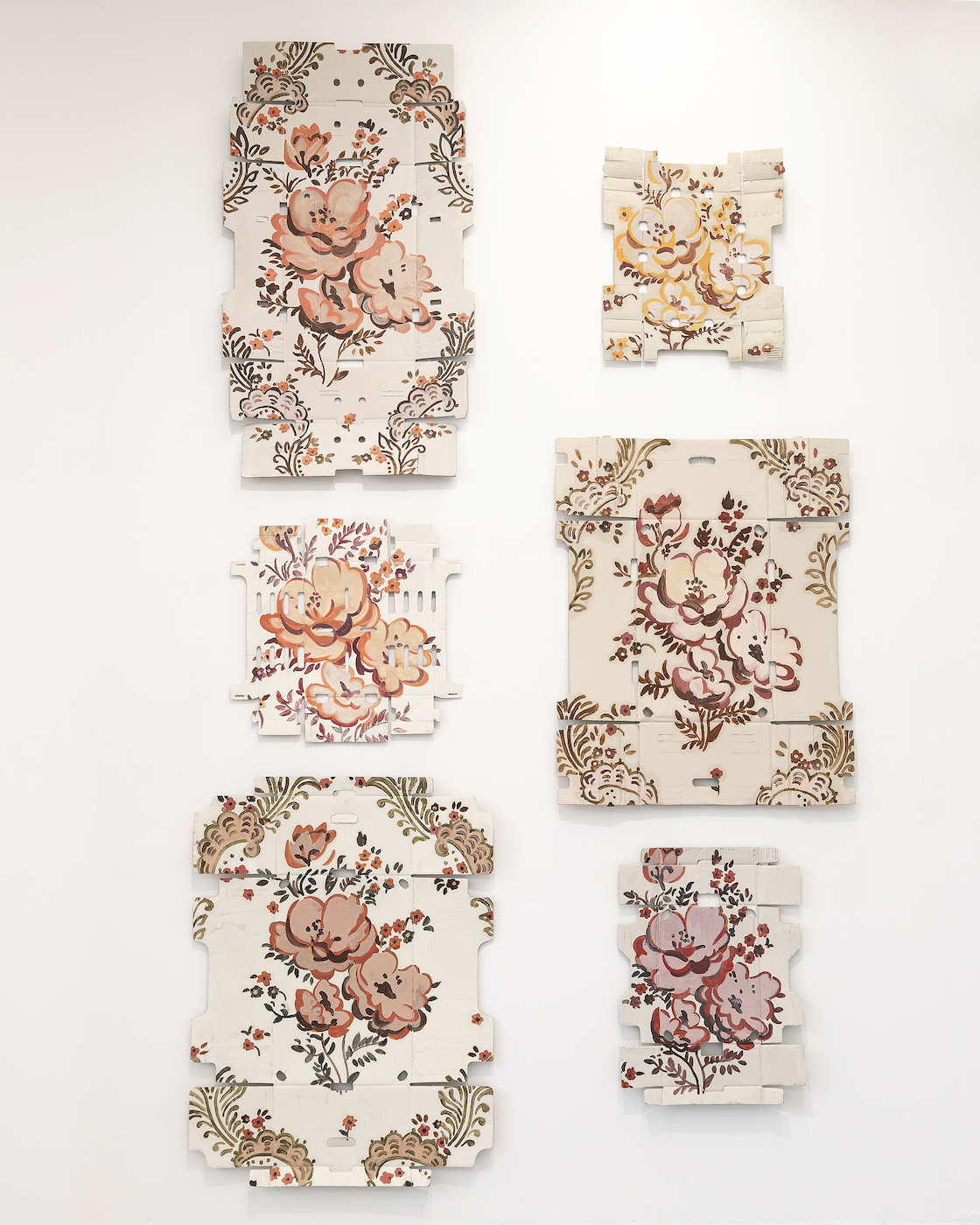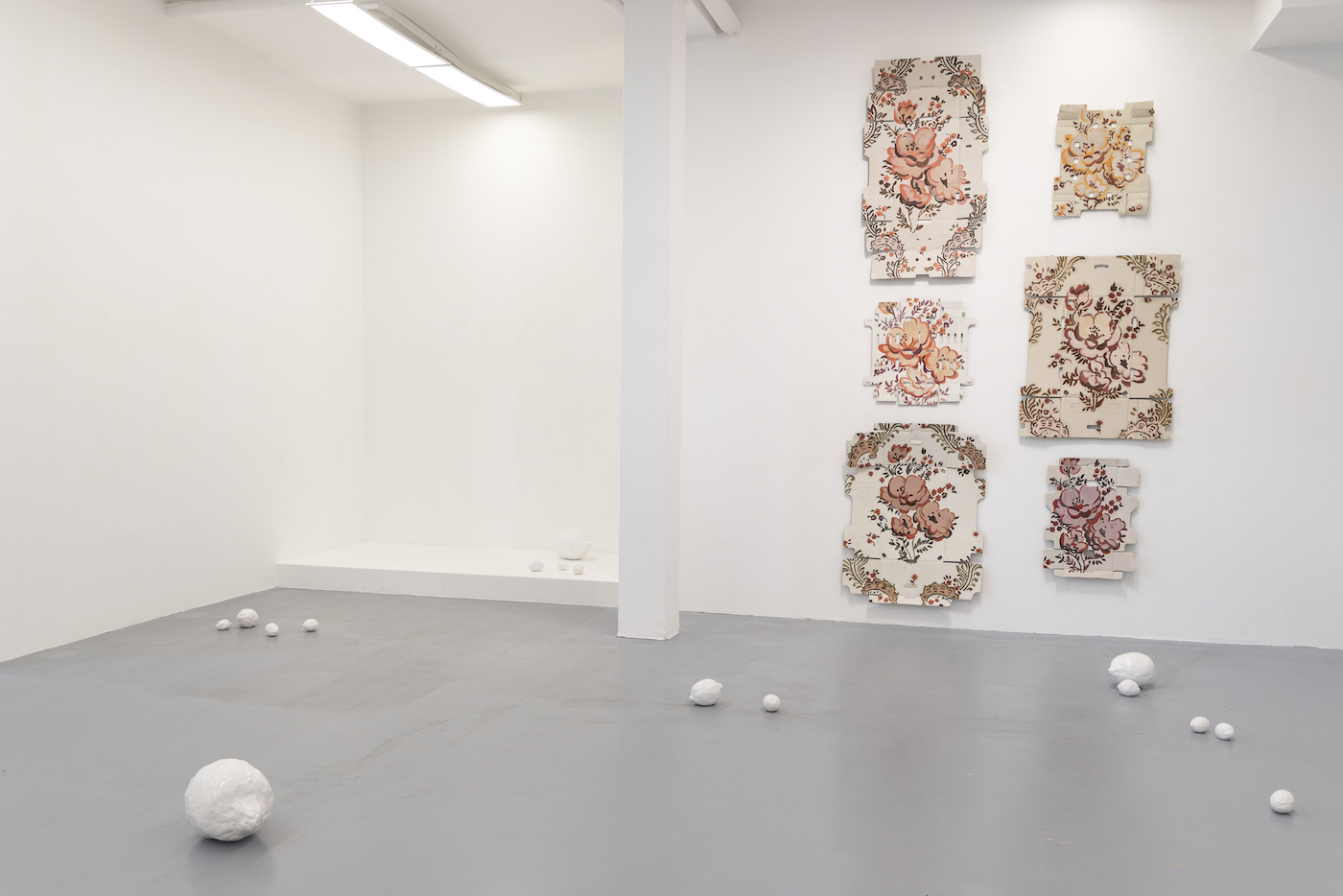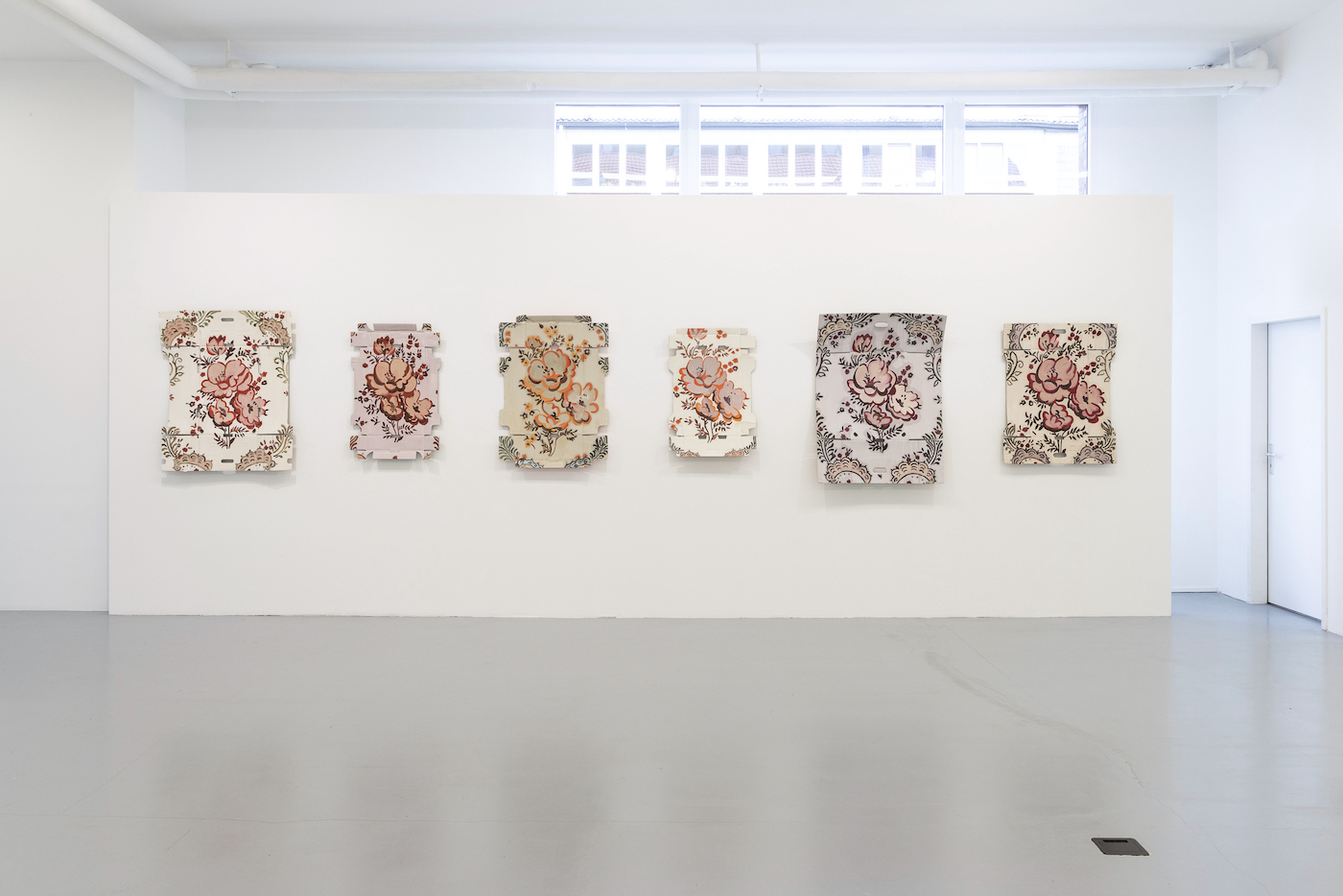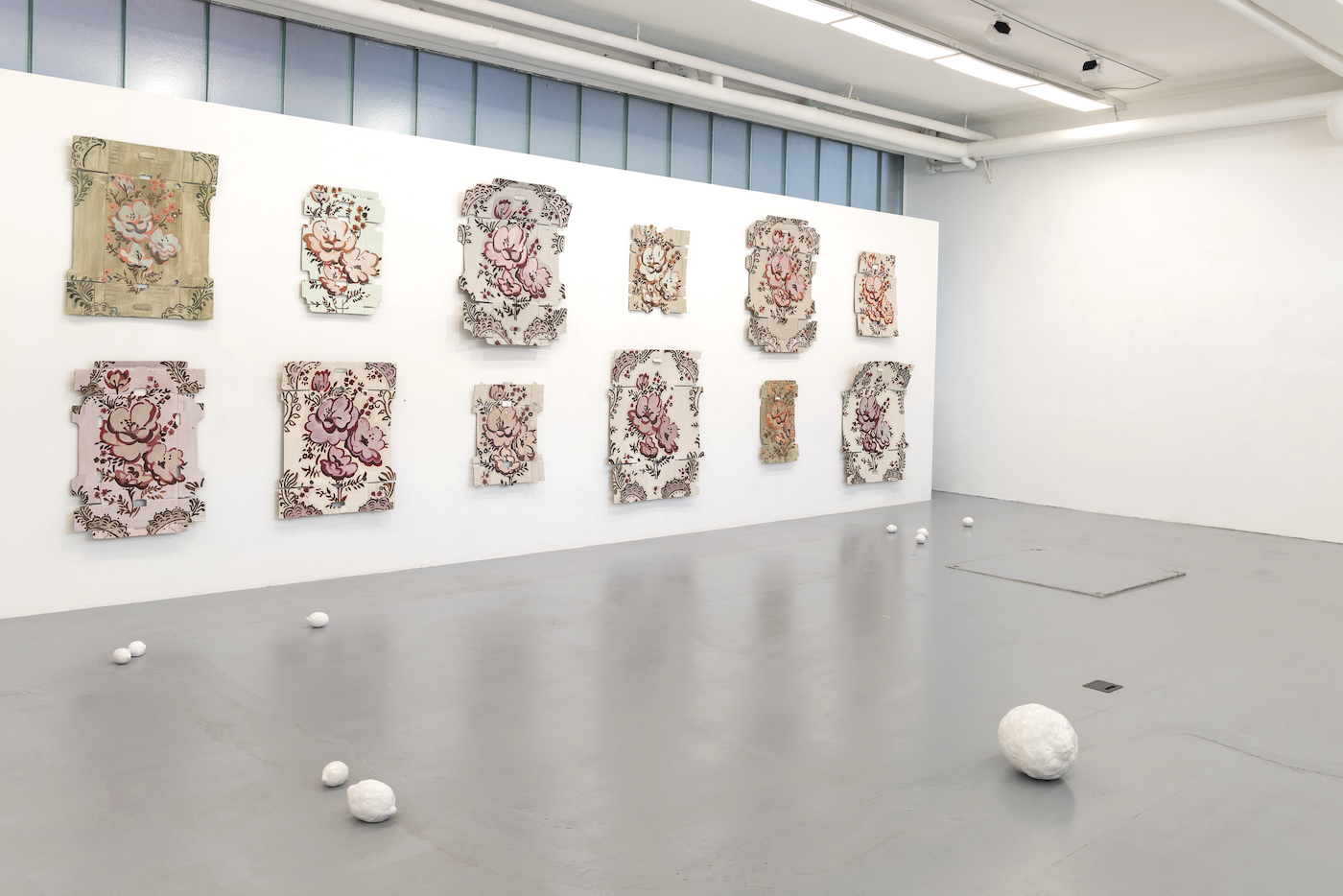Nata Togliatti
CV
| *1989 | Togliatti, UdSSR |
| 2011–2014 | History of art and culture, Graphic Prof. Bettina van Haaren, TU Dortmund |
| 2014–2016 | History of art and culture, Painting Prof. Jan Kolata, TU Dortmund |
| 2016–2023 | Diploma, Akademie der Bildenden Künste München, Prof. Gregor Hildebrandt |
| Lives and works in Munich |
Grants / Scholarships
| 2022 | Verbindungslinien, BBK Landesverband Bayern e.V. |
| Junge Kunst und neue Wege, bayern innovativ | |
| Nomination Talente 2021/2022, Preis der Handwerkskammer München | |
| 2021 | Nomination Oberbayerischer Förderpreis für angewandte Kunst |
| 2020 | Förderpreis LfA Förderbank Bayern |
Solo exhibitions
| 2023 | Genussvolle Flucht, Evelyn Drewes | Galerie, Hamburg |
| 2018 | Kennst du das Land, wo die Zitronen blühn, REWE Premium, Munich |
| 2016 | ein blick, ARTCORNER, Cologne |
Group exhibitions
| 2023 | SPEISERAUM - First Edition FOOF FOR THOUGHT, Schloss Hohenstein, Coburg |
| GENUSSVOLLE FLUCHT, Diplomausstellung, Akademie der Bildenden Künste München | |
| Like me Later, Linklaters, Munich | |
| 2022 | Auktion Rotary Club, Karl & Farber Auktionshaus, Munich |
| Oumuamua, Kunstarkaden, Museum für zeitgenössische Werke, Munich | |
| Minds are Magnets, Canal Street Research, New York, USA | |
| Junge Kunst, 24. Kunstwochenende im Zehentstadel, Moosburg an der Isar | |
| Das große Finale, Lazyland Galerie, Munich | |
| Talente 2022 - Meister der Zukunft, Handwerkskammer München, Messe Riem | |
| 2021 | Release HTSSNASS:S COLLECTION 2021, Super BOOKS, Haus der Kunst, Munich |
| MISA.ART #3, König Galerie, Berlin | |
| SUPERmARkt-Frische Lieferung, REWE Premium, Munich | |
| Blick zurück nach vorn, Galerie Klüser, Munich | |
| Koschatzki Art Award, Palais Schönborn, Vienna, Austria | |
| Steine auf der Landebahn, Padova Kunsthalle, Munich | |
| X Meter unter der Stadt, Akademie Galerie, Munich | |
| 2020 | Zimmer Frei, Kunstprojekt der Stadt München, Hotel Mariandl |
| Jahresausstellung der Klasse Hildebrandt, Munich Center of Community Arts | |
| 2019 | Jahresausstellung, Akademie der Bildenden Künste München |
| 2018 | Wir schwimmen alle im gleichen Wasser, Pasinger Fabrik, Munich |
| Blick hinter die Kulissen, Dorothea Tanning-Saal des Max-Ernst Museum, Brühl | |
| 2017 | go to paradise, Kunstarkaden, Kunstraum der Stadt München |
| 2016 | Plastische Arbeiten, Hallen der [ID] factory, Zentrum für Kunsttransfer, Dortmund |
| Punkt Linie Fläche, Kunstraum am Rhein DCKD, Düsseldorf | |
| 2015 | Import Export III, Kunsthalle Lichthof, Cologne |
Delightful Escape
Nata Togliatti’s diploma project „Delightful Escape” is conceived as a holistic installation, in which the artist juxtaposes two of her ongoing work series: Her “Cave Paintings” stretching across the walls are executed on packaging material. They all feature the same motive of an ornamental blossom. Hanging each piece in a loose grid, the artist purposefully evokes an aesthetic alluding to tapestries. In contrast to the painterly haptic works on the walls, the floor is covered with glazed sculptures. They are all hand-made and take the shape of lemons in different sizes. They too derive from a series of works, in which each singular piece is titled “maidservant.”
Nata Togliatti’s handling of the ornament and her handmade ceramics in the context of contemporary art remind of a specific moment in the Western history of art when the pattern was decidedly freed from a subordinated context of the decorative. Representants from the American 1970’s Pattern & Decorationmovement (in short: P&D) called upon century-old, non-western image traditions, wherein flatness and repetition were celebrated. These were things already referenced in the Avantgarde of the early 20th century, but what was specific about P&D is that its representants began questioning socio-political mechanisms, which caused an initial divide into high art of painting and crafts. One of the conditions P&D artists particularly denounced was the suppression of women into anonymous makers of decorative objects.
Nata Togliatti’s paintings do not stem from an art-historical enquiry into P&D but originate from a personal context of her grandparents’ flat, where she spent her childhood summers. Just before her grandparents moved out, she captured the ornamental wallpapers of their interior design. In her first “Cave Paintings” she deliberately took inspiration from these encapsulated memories, whereby ‘cave’ is thought to indicate memory’s potential to emotionally revive a place that is no longer physically existing.
It is possible, however, to establish a connection between Togliatti’s specific investigations into the ornament and the P&D artists that preceded her: in her diploma work, Nata Togliatti has shifted her focus from the once nostalgia-loaded object to the ornament as central issue in the context of painting. In this, she literally places the ornamental taken from industrially produced wallpapers into her composition’s center. In terms of technique, her way of painting the ornaments by hand is a reference to ornamental art in early cultures. Back then, the ornament was situated on the fringes to ‘serve’ as an atmospherically enticing component towards a central composition. This characteristic remained with the ornament throughout the centuries and even finds itself present in industrially produced wallpapers, though indicating ideas on taste and prestige from bygone eras. Nata Togliatti brings both – crafts and décor, back into the game, hereby also restimulating the discourse around hierarchies prevailing in certain genres and techniques.
Togliatti paints each blossom by hand, in slight variations of color and with subtle deviations from the original pattern. Herein lies again a reference to the high art of ornamental embellishment, where craftspeople too played around with alterations. Though in contrast to classical ornamental art, Nata Togliatti paints with coarse brushstrokes. The way she applies thick paint suits the idiosyncratic surface of the packaging material. These overpacks literally back the food industry, in a sense they can be seen as emblems of global trade chains.
The sculptural pieces insinuating lifelike lemons spread across the floor either remind of accidently scattered fruit or a labyrinth of carefully placed obstacles. Their ceramic materiality, and especially the varnish underlines the fragility of the manufactured, organically curved surface. The citrus fruit has been associated with seductive powers in both mythological and religious texts. In the early bible context, the citrus fruit was even believed to be the forbidden fruit. This biblical connotation puts the lemon in direct connection to Adam and Eve – the protagonists of the Fall – but especially in connection to Eve, who is seen as the embodied allegory of seduction.
With all this in mind, one is now left to wonder whether Nata Togliatti’s installation “Delightful Escape” truly resembles a living interior or rather something entirely different – a contemporary rendition of the panel painting “Paradise Garden” by Upper Rhenish Master, ca. 1410/20. In this medieval work, the painter included allusions to both the sacred context of the closed, virginal garden as well as to profane pleasances. In similar regards, Nata Togliatti’s diploma work also moves between a set of changing meanings: On the one hand, she reveals mechanisms of our capitalist consumer culture, while on the other hand she raises questions of cultural belonging between personal and collective memories. At last, Togliatti’s deep enquiry into the politics of symbols is also present at the level of her works’ titles: The sculptures “maidservants” stands in direct dialogue to the paintings in which the ornament has been disentangled from its ‘serving’ position. In the end, the question remains of who and what is serving whom, and to which purpose.
Tatjana Schaefer

